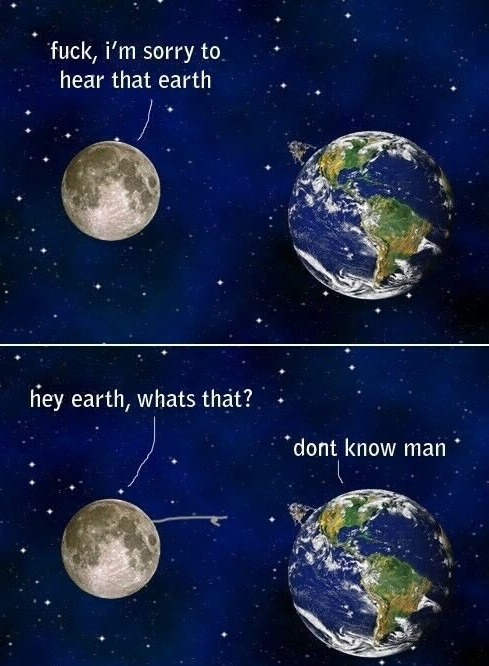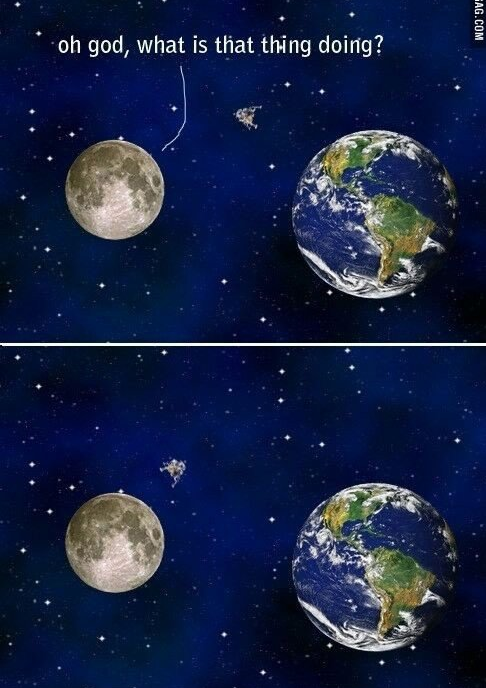We’re With You When You Fly
We’re With You When You Fly

Did you know that “We’re With You When You Fly”? Thanks to our advancements in aeronautics, today’s aviation industry is better equipped than ever to safely and efficiently transport millions of passengers and billions of dollars worth of freight to their destinations. In fact, every U.S. Aircraft flying today and every U.S. air traffic control tower uses NASA-developed technology in some way. Here are some of our objectives in aeronautics:
Making Flight Greener

From reducing fuel emissions to making more efficient flight routes, we’re working to make flight greener. We are dedicated to improving the design of airplanes so they are more Earth friendly by using less fuel, generating less pollution and reducing noise levels far below where they are today.
Getting you safely home faster

We work with the Federal Aviation Administration to provide air traffic controllers with new tools for safely managing the expected growth in air traffic across the nation. For example, testing continues on a tool that controllers and pilots can use to find a more efficient way around bad weather, saving thousands of pounds of fuel and an average of 27 minutes flying time per tested flight. These and other NASA-developed tools help get you home faster and support a safe, efficient airspace.
Seeing Aviation’s Future

Here at NASA, we’re committed to transforming aviation through cutting edge research and development. From potential airplanes that could be the first to fly on Mars, to testing a concept of a battery-powered plane, we’re always thinking of what the future of aviation will look like.
Make sure to follow us on Tumblr for your regular dose of space: http://nasa.tumblr.com
More Posts from Curiositytherover and Others
I never take selfies let alone smiling selfies and I’m hardly ever happy. Lemme see if this actually works



A major breakthrough could let both same-sex partners be biological parents to their kids
Could two same-sex partners ever be biologically related to one baby? Maybe. With a relatively new process called in vitro gametogenesis, or IVG, scientists could combine genetic material from both parents. While we may have to wait a bit for it — here’s how it works.

Perseid Fireball at Sunset Crater

Hi guys! I was inspired to make this post by all of the messages I’ve gotten from people asking me to either tag or stop posting images of spiders all together. And as someone who used to be absolutely mortified by any 8-legged creature, I can see where you are all coming from! I used to have a bedroom in the attic, a musky basement, an exotic plant and flower garden, and lots of wood piles. So it’s no wonder that I was confronted with spiders of all shapes and sizes. Ranging from the wolf spider, the brown recluse, cellar spiders, and all kinds of orbweavers. Spiders are incredibly important to our ecosystem, and without them we would suffer. They are incredibly complex and fascinating little creatures that, whether we like it or not, are going to cross our path. What helped me come over my fear the most was simply taking the time to learn about them.

1.) You swallow spiders in your sleep: FALSE. Might as well start with the one we’ve all heard! There would have to be so many unlikely circumstances for this to happen that it’s pretty implausible. Most spider species prefer to stay in their webs, while others hunt no where near humans. Beds don’t offer prey so they likely won’t crawl into them intentionally, unless you have other bugs in your bed for whatever reason. Spiders already could care less about us, they definitely won’t be crawling into a moist, slumbering and snoring human mouth. 2.) Two puncture marks means a spider bite: FALSE. Spiders do have two venom-injecting fangs that they usually use at the same time when biting. However, any spider smaller than a tarantula will leave bites so small that there will be no identifiable separation, if a mark is even left at all. When you have two bites right next to each other, it’s probably from a different bloodsucking insect that has bitten you twice. 3.) Daddy Long Legs have the most powerful venom, but its fangs are too small to bite you: FALSE. This is another wildly accepted urban legend with no fact behind it whatsoever. Depending on where you’re from, you may have a different idea of what a Daddy Long Leg is. To some it is a Harvestman while to others it is a Crane Fly; both have no venom! To others it is a Pholcid House Spider, which does have venom, however it is extremely weak. 4.) You’re always within 3 feet of a spider: FALSE. There’s actually some history behind this one! According to an article from the Burke Museum, it started in 1995 when a famous arachnologist stated, “Wherever you sit as you read these lines, a spider is probably no more than a few yards away.“ Throughout the years this line as been repeated with the distance becoming shorter and shorter. In reality, nobody can really say how far you are from a spider at any time. Just remember that spiders don’t really care about you are are likely to ignore you and go about their business. 5.) Spiders can lay their eggs under human skin through their bites: FALSE. First of all, spiders do not find the human body suitable for egg laying. However there are tons of stories claiming that someone’s “friend” had it occur to them (usually by a brown recluse, which prefer to stay far away from humans as their name suggests). Spiders simply don’t have the ability to somehow transfer their eggs into their venom. 6.) Any spider species can be found anywhere: FALSE. Just like animals and insects, spiders prefer certain climates to thrive. Therefore this myth is completely false. Besides house spiders, many species have very limited ranges. For more information on spiders in your area, a quick Google search will do you much better. 7.) Spiders found in your home are dangerous: FALSE. Spiders are not bloodsuckers. They have no reason to bite humans or your beloved Fluffy. Rod Crawford, the Curator of Arachnids at The Burke Museum, has been handling thousand of spiders for 44 years. He claims to have been bitten a total of 3 times. The spiders that are typically found in homes do not obtain venom powerful enough to do you any harm. 8.) Spiders come indoors in the fall: FALSE. Arachnophobes may not like this, but, the spiders in your house have likely been there the entire time. Outdoor spider species are not adapted to the indoors, and vice versa with house spider species. Very few spiders you see in your home have ever been outdoors. 9.) Tarantulas are dangerous or deadly to humans: FALSE. Hollywood tends to paint tarantulas as evil beasts who actively seek out humans to bite. In reality, tarantulas are common furry pets who are easily handled. Their venom has very low toxicity to humans. Most people who have been bitten don’t report anything besides a quick “ouch”. The most “dangerous” thing about tarantulas is the hair on their abdomens, which they can flick off and spread into the air. Although, this only causes mild skin rashes and irritation to the eyes and nasal passages.

1.) There are approximately 38,000 known species of spiders (as of February, 2015). Scientists believe there are still many more to be discovered. 2.) Spiders are vital to the ecosystem. Most of us know that they eat harmful insects, but they also pollinate plants and recycle dead animals and plants back into the Earth. They are also an essential food source to other small mammals, birds, and fish. 3.) Not all spiders spin webs. However, they all have the ability to produce silk. 4.) Web-weaving spiders have claws at the end of each leg. This enables them to move around their webs without getting stuck! 5.) Spiders have blue blood. 6.) Giant trapdoor spiders are considered living fossils. This is because they are very similar to the spiders that lived 300 million years ago! 7. The world’s biggest spider is the Goliath Spider. It can grow up to 11 inches wide with up to 1 inch long fangs! But don’t worry; it only eats frogs, mice, and other small creatures. 8.) Spiders have an exoskeleton. While us humans have bones that are surrounded by our muscles, spiders have their bones on the outside to protect their muscles on the inside. Which kinda make more sense to me. Grasshoppers, lobsters, and cockroaches are just a few that also have exoskeletons. 9.) Spider legs use hydraulic pressure to move. Their muscles are able to pull their legs inward, but not out again. This requires pumping a watery liquid into the legs to move them back out. This is why dead spiders’ legs are curled in. 10.) Spiders sometimes use a line of silk to “fly” through the air. This is called “ballooning”. You probably remember all but three of Charlotte’s babies did this. 11.) Baby spiders are called spiderlings. Pretty adorable. 12.) Males risk being eaten by the females. Similar to insects, female spiders are usually larger. They tend to eat any small creature that comes along, including the males who just wanna get some. The males attempt to avoid this by plucking strands of the female’s webs or doing a little dance (jumping spiders, who knew they could get more adorable).

Now, I know overcoming fears does not come easily to everyone. It took me quite a while! So I’ve put together some ideas that helped me. Just remember that this may not help everyone. If your fear is complicating every day life it may be best to seek help from a professional. 1.) Watch YouTube videos of spider handlers. This, this step right here, was the most important for me. It all started with this video. This owner cared so much about his spider who was having difficulties molting. He took the time to attempt to help her get it off, and showed a huge amount of grief and compassion as it went on. As someone who used to be scared of spiders, this video showed me a different side. This person loved this spider just like I love my cat. I began watching and subscribing to more and more channels, and found that it helped me a lot. Some channels worth looking at are tarantulaguy1796, TarantulaAddict, Jon3800, and Frankus Lee. 2.) Observe live spiders. If you see a spider in your house or outside, take a deep breath and just watch it for a little bit (at a distance, if you’d prefer). Watch its legs and how it moves, its different body parts and what it seems to be doing. Just watch them. They’re not going to jump on you and start gnawing on your arm like a human corn-on-the-cob, I promise. 3.) Visit spider exhibits. Whether it be at an aquarium, zoo, or museum, take the time to take a walk through the insect and arachnid exhibits. There will often be someone there who knows a lot about them who you can talk to. As mentioned before, the more you learn about them, the less scary they become! 4.) Watch someone handle a spider, or handle one on your own! Okay maybe the second one is a big step to take right now. But a lot of spider handlers may let you touch their legs (which are a lot furrier than you’d think!). However, if you’re too afraid, it’s best to watch from a distance for a while or pay close attention to how the handler holds the spider. The first time I held a spider I was pretty scared, but I was more concerned with dropping it or hurting it. I was amazed at how not-creepy it was and I walked away with an awesome experience. Just remember to keep them away from your face and to wash your hands before and after to keep those pesky hairs from irritating you. 5.) Overall, take it slow. If you need to start with pictures, start with pictures. Then gifs. Then videos. Then live spiders. It’s all up to you. In reality, spiders do not want to bother you. They are not these crazy blood-thirsty creatures that Hollywood and myths make them out to be. Educate yourself and remind yourself how amazing and important these little 8-legged guys are! EDIT: Silly me I totally forgot to include my sources! Fascinating Facts About Spiders Amazing Facts About Spiders Explorit Science Center Rod Crawford Burke Museum Scientific American






Solar System: Things to Know This Week
This week, we’re looking at MAVEN’s exploration of Mars, the Orionid meteor showers, Mercury’s “great valley” and more.

1. Celebrating MAVEN
MAVEN, the Mars Atmospheric and Volatile Evolution, was the second mission selected for our Mars Scout program and the first to explore the planet’s upper atmosphere . It launched on November 18, 2013 and entered orbit around Mars on September 21, 2014.
+ MAVEN Quick Facts

2. Jupiter Moon Dance
This time-lapse sequence of Hubble Space Telescope images shows Jupiter’s moon Europa as it moved across the planet’s face over the course of 19 minutes. Europa is at the bottom center on Jupiter’s disk, the Great Red Spot to the left and Europa’s shadow to its right. The video was created by combining six snapshots taken in ultraviolet light with Hubble’s Wide Field Camera 3.
+ Learn more

3. The Orionid Meteor Shower
Orionid shower peaks November 28. Look for the constellation Orion in the Southeast sky by 9 p.m. Using binoculars, look for the Orion Nebula.

4. Comet Warming Up!!
Comet 45P/Honda-Mrkos-Pajdu áková will brighten to expected stunning binocular visibility in mid to late December, but is near Venus on November 23rd.
+ Track the Comet

5. Mercury’s “Great Valley”
A newly discovered “great valley” in the southern hemisphere of Mercury provides more evidence that the planet closest to the sun is shrinking. Using stereo images from our MESSENGER spacecraft to create a high-resolution map, scientists have discovered that revealed the broad valley – more than 620 miles (1,000 kilometers) long – extending into the Rembrandt basin, one of the largest and youngest impact basins on Mercury. About 250 miles (400 kilometers) wide and 2 miles (3 kilometers) deep, Mercury’s great valley is smaller than Mars’ Valles Marineris, but larger than North America’s Grand Canyon and wider and deeper than the Great Rift Valley in East Africa.
+ Learn more
Discover the full list of 10 things to know about our solar system this week HERE.
Make sure to follow us on Tumblr for your regular dose of space: http://nasa.tumblr.com

The geniuses at MIT have created a Wi-Fi network so high-tech it doesn’t need a password
Researchers at the Massachusetts Institute of Technology want to change how we connect to Wi-Fi. To avoid the cumbersome network login process, a team has come up with a way to grant computers access to a Wi-Fi network based on their proximity to a router. But what about security?
Follow @the-future-now



Kryptos is an encrypted sculpture by the American artist, Jim Sanborn, that is located on the grounds of the Central Intelligence Agency (CIA) in Langley, Virginia. Since its dedication on November 3, 1990, there has been much speculation about the meaning of the encrypted messages it bears. Of the four messages, three have been solved, with the fourth remaining one of the most famous unsolved codes in the world. The sculpture continues to provide a diversion for cryptanalysts, both amateur and professional, who are attempting to decipher the final section. The sculptor has given clues on several occasions.
The solved messages can be read here: [x]
(Fact Source) For more facts, follow Ultrafacts

Area of a circle
Interactive version:
http://www.malinc.se/math/geometry/circleen.php






Top 10 Humanoid Robots
Read more at: http://futurism.com/images/ http://futurism.com/images/top-10-humanoid-robots/
-
 erentar2002 liked this · 8 years ago
erentar2002 liked this · 8 years ago -
 yoonreign-blog liked this · 9 years ago
yoonreign-blog liked this · 9 years ago -
 aricontent-blog reblogged this · 9 years ago
aricontent-blog reblogged this · 9 years ago -
 aricontent-blog liked this · 9 years ago
aricontent-blog liked this · 9 years ago -
 plantiestgay liked this · 9 years ago
plantiestgay liked this · 9 years ago -
 creepyshrooms liked this · 9 years ago
creepyshrooms liked this · 9 years ago -
 linanlu liked this · 9 years ago
linanlu liked this · 9 years ago -
 starless-paths liked this · 9 years ago
starless-paths liked this · 9 years ago -
 upnorthnorthernlights reblogged this · 9 years ago
upnorthnorthernlights reblogged this · 9 years ago -
 tristanshoard reblogged this · 9 years ago
tristanshoard reblogged this · 9 years ago -
 nachofavekind liked this · 9 years ago
nachofavekind liked this · 9 years ago -
 astrotanmay liked this · 9 years ago
astrotanmay liked this · 9 years ago -
 cfmindz liked this · 9 years ago
cfmindz liked this · 9 years ago -
 ultrasuperwonderlandcollect-blog liked this · 9 years ago
ultrasuperwonderlandcollect-blog liked this · 9 years ago -
 junkirat liked this · 9 years ago
junkirat liked this · 9 years ago -
 gopigeorge liked this · 9 years ago
gopigeorge liked this · 9 years ago -
 officialcannoli liked this · 9 years ago
officialcannoli liked this · 9 years ago -
 princessjameskirk-blog reblogged this · 9 years ago
princessjameskirk-blog reblogged this · 9 years ago -
 cwait5107-blog liked this · 9 years ago
cwait5107-blog liked this · 9 years ago -
 addchan liked this · 9 years ago
addchan liked this · 9 years ago -
 computer--cats liked this · 9 years ago
computer--cats liked this · 9 years ago -
 michaelcosio reblogged this · 9 years ago
michaelcosio reblogged this · 9 years ago -
 mralenko liked this · 9 years ago
mralenko liked this · 9 years ago -
 aliencomicinvasion liked this · 9 years ago
aliencomicinvasion liked this · 9 years ago -
 virtually-unknown liked this · 9 years ago
virtually-unknown liked this · 9 years ago -
 kala131-blog liked this · 9 years ago
kala131-blog liked this · 9 years ago -
 ovineaviation liked this · 9 years ago
ovineaviation liked this · 9 years ago -
 centinel75 liked this · 9 years ago
centinel75 liked this · 9 years ago -
 maffooshpee liked this · 9 years ago
maffooshpee liked this · 9 years ago -
 note-head-blog liked this · 9 years ago
note-head-blog liked this · 9 years ago -
 allegrowx liked this · 9 years ago
allegrowx liked this · 9 years ago -
 inter-stellxr-blog reblogged this · 9 years ago
inter-stellxr-blog reblogged this · 9 years ago -
 scienc5life liked this · 9 years ago
scienc5life liked this · 9 years ago -
 aerospaceengineering reblogged this · 9 years ago
aerospaceengineering reblogged this · 9 years ago -
 love4loops liked this · 9 years ago
love4loops liked this · 9 years ago